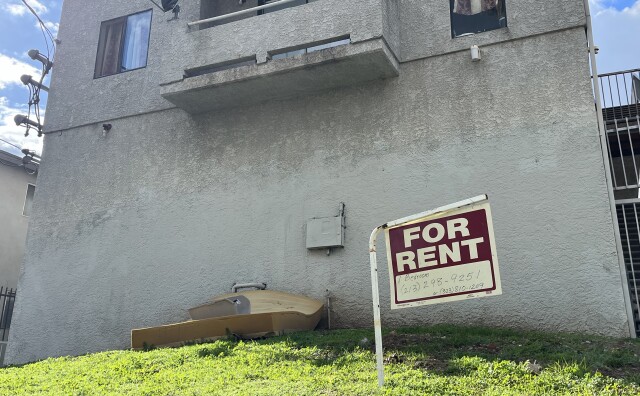LADWP’s Owens Lake Dustbowl Is Better, But More Dust Control Is Needed

More than a century ago, when the city of L.A built an aqueduct to bring water down from the North, it diverted water from Owens Lake. That brought a plentiful water supply south, but left behind a dust bowl that is one of the nation’s worst sources of air pollution.
Dust control measures have cost Los Angeles Department of Water and Power customers more than $2 billion over the past 20 years. But a new report out Wednesday says it’s not working well enough.
The LADWP has tried a lot of things to control dust rising from the dry Owens Lake bed and has seen a significant reduction in particulate pollution. It's flooded some areas of the lake, grown shrubs, built fences, used sprinklers and applied binders to make the dust stick to the soil like frosting on a cake.
The lung-damaging pollution used to be 20 times worse than state and federal standards, and now -- it’s only about twice as bad. However, it still needs to be reduced.
Shallow flooding the lake bed works best. But LADWP says that uses too much water that L.A. needs.
In its report, the National Academies of Science recommends trying some hybrid methods of dust control that combine two or more strategies. Like growing vegetation in areas of the lake that are lightly watered.
The report is part of a settlement agreement between the Great Basin Unified Air Pollution Control District serving Alpine, Mono and Inyo counties which complained about the dust, and the LADWP, which is responsible for controlling the dust.
GO DEEPER:
-
The severe lack of family friendly housing has millennial parents asking: Is leaving Southern California our only option?
-
As the March 5 primary draws closer, many of us have yet to vote and are looking for some help. We hope you start with our Voter Game Plan. Since we don't do recommendations, we've also put together a list of other popular voting guides.
-
The state's parks department is working with stakeholders, including the military, to rebuild the San Onofre road, but no timeline has been given.
-
Built in 1951, the glass-walled chapel is one of L.A.’s few national historic landmarks. This isn’t the first time it has been damaged by landslides.
-
The city passed a law against harassing renters in 2021. But tenant advocates say enforcement has been lacking.
-
After the luxury towers' developer did not respond to a request from the city to step in, the money will go to fence off the towers, provide security and remove graffiti on the towers.






